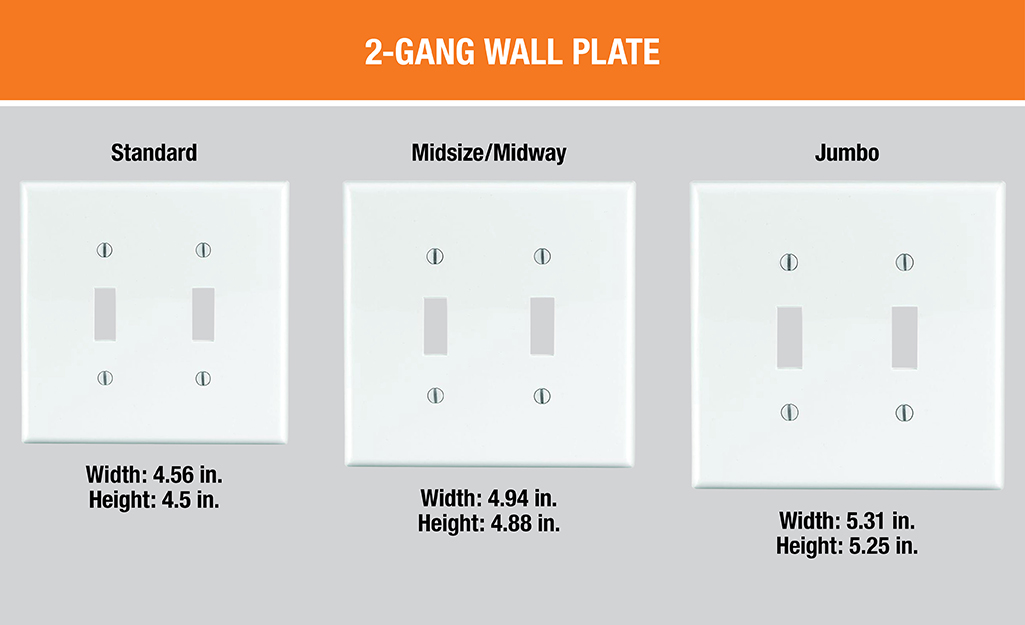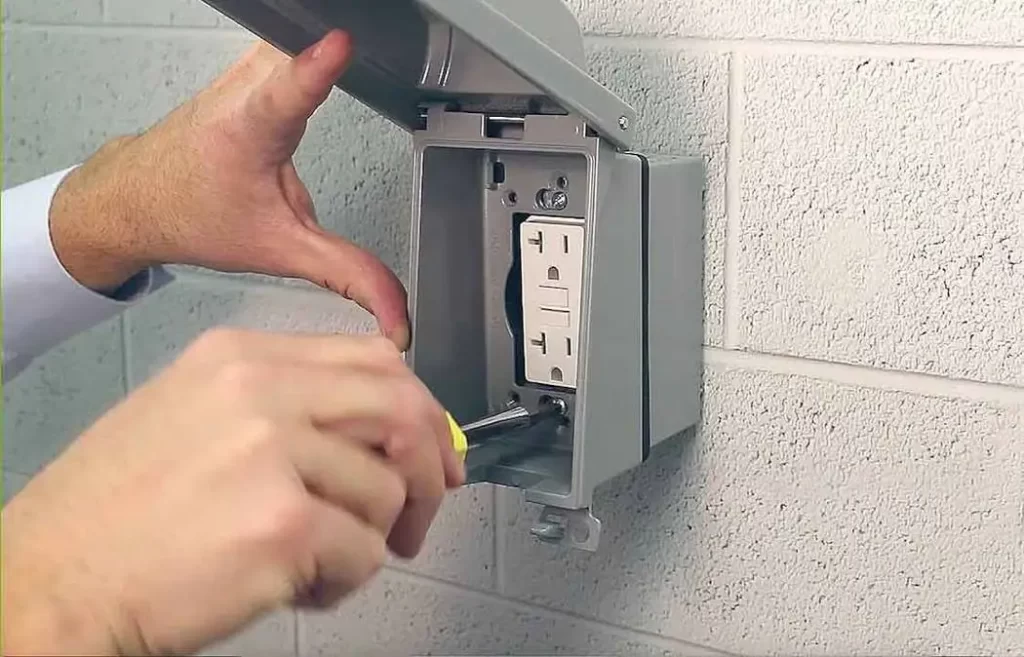Outdoor outlet cover is essential for safeguarding electrical outlets that are exposed to outdoor conditions. These covers protect the outlets from various weather elements such as rain, snow, dew, humidity, extreme temperatures, and other conditions that could potentially harm the electrical system or pose safety hazards. The primary function of these covers is to ensure that the outdoor electrical outlets remain functional and safe to use, regardless of the weather conditions.
There are different types of outdoor outlet covers available, including weatherproof covers that are specifically designed to withstand harsh weather conditions. These covers come in various styles, including 1-gang weatherproof in-use outlet covers, which can be used in both horizontal and vertical orientations. They are also lockable and comply with UL extra duty standards, ensuring a high level of protection and safety for outdoor electrical outlets.
Retailers such as Lowe’s, The Home Depot, and Amazon offer a wide range of outdoor outlet covers. Customers can find a variety of options to meet their specific needs, including weatherproof covers that are available for free shipping or for purchase online with the option to pick up in-store at The Home Depot. These retailers provide a convenient way to purchase high-quality outdoor outlet covers to protect outdoor electrical systems effectively.
Disclosure: Some links on LucentZone.com may result in affiliate compensation if you choose to purchase a paid plan. Please refer to our privacy policy for our affiliate disclosure. Our site does not provide financial advice, it is for entertainment purposes only.
Benefits of Using an Outdoor Outlet Cover
The benefits of using an outdoor outlet cover include:
Protection from Weather: It shield the electrical outlets from rain, snow, dew, humidity, and extreme temperatures, which can prevent short circuits and other electrical hazards.
Safety: By keeping debris and moisture out, outdoor outlet covers reduce the risk of electrical fires and enhance overall safety when using outdoor electrical systems.
Compliance with Codes:In many jurisdictions, having a weatherproof cover for outdoor GFCI power outlets is required by code. Using an appropriate cover ensures that the installation is up to standard and legally compliant.
Prevention of Electrical Damage: Outdoor GFCI outlets with covers can handle more electrical load, such as additional strands of lights, without overloading a circuit or causing electrical damage.
Durability: Weatherproof covers, especially those that are UL extra duty compliant, are designed to be durable and provide long-term protection for outdoor outlets.
Convenience: Having covered outdoor outlets installed near entertainment zones or areas of frequent activity provides easier access to electricity for outdoor activities.
How to Choose the Right Size of Outdoor Outlet Cover?
Choosing the right size of outdoor outlet cover involves considering several factors to ensure that the cover fits properly and provides adequate protection for your outdoor electrical outlets. Here are some guidelines to help you select the right size:
- Understand Outlet Types and Sizes: Outdoor electrical outlets can vary in size and configuration. Standard outlets are typically single-gang, but there are also double-gang or larger configurations for multiple outlets or switches. Knowing the type and size of your outlet is the first step.
- Consider the In-Use Needs: If you plan to plug in devices while the cover is closed, look for “in-use” or “bubble” covers. These covers have a larger exterior to accommodate plugs and ensure the cover can close properly, providing protection even when the outlet is in use. The size of the plug and the space needed should be considered, as some larger plugs may require more room.
- Check for Standardization: While there is some standardization in outlet sizes and screw placement, variations exist. Most single-gang covers will fit standard single-gang boxes, but it’s important to verify the dimensions and screw placement. Some covers are designed to be adjustable or have multiple pre-drilled holes to fit different configurations.
- Look for Weatherproof and Compliance Features: For outdoor use, ensure the cover is weatherproof and, if applicable, compliant with local codes or standards such as UL extra duty. These features often dictate the design and size of the cover, ensuring it provides adequate protection against weather conditions.
- Consider the Installation Orientation: Some covers are designed to be used in either horizontal or vertical orientations. This flexibility can affect the size and type of cover you choose, depending on the installation location and available space.
- Read Product Descriptions and Reviews: When shopping online or in stores, carefully read the product descriptions to understand the dimensions, compatibility, and features of the outlet cover. Customer reviews can also provide insights into how well the cover fits and functions in real-world applications.
By taking these factors into account, you can select an outdoor outlet cover that fits your needs, provides adequate protection, and complies with any applicable safety standards.
You may also read: Lowes Gift Card Balance
The Factors to Consider When Choosing an Outdoor Outlet Cover Size

When choosing the size of an outdoor outlet cover, consider the following factors:
- Type of Outlet: Determine whether your outlet is a standard single-gang, double-gang, or a different configuration. This will influence the size and shape of the cover you need.
- In-Use Versus Standard Covers: Decide if you need an in-use cover that can close over an outlet while a plug is inserted, or a standard cover that only protects the outlet when it’s not in use. In-use covers are larger to accommodate plugs.
- Weatherproofing: Ensure the cover is weatherproof to protect against rain, snow, dew, humidity, extreme temperatures, and other weather conditions. The level of weatherproofing may affect the size and design of the cover.
- Compliance with Codes: Check local codes to ensure the cover meets legal requirements. Some jurisdictions may require specific types of covers, such as those that are UL extra duty compliant.
- Size of Plugs: If you have larger plugs, you’ll need a cover that can accommodate them. Some covers are designed to fit larger adapters or transformers.
- Installation Orientation: Some covers are designed for horizontal or vertical installation. Choose a cover that fits the orientation of your outlet.
- Aesthetics and Space: Consider the space around the outlet and how the cover will look once installed. The cover should not only be functional but also fit well with the exterior design of your home or building.
- By taking these factors into account, you can ensure that you select an outdoor outlet cover that provides the necessary protection and fits your specific needs.
Types of Outdoor Outlet Covers
Outdoor outlet covers come in various types to protect electrical outlets from the elements, such as rain, snow, or dust. Here are the different types of outdoor outlet covers available:
- Weatherproof Covers: These are designed to safeguard outdoor outlets in all weather conditions. They are made of durable materials like die-cast aluminum and often have a powder coat finish for extra protection.
- In-Use Covers: Also known as “bubble covers,” these are designed to protect the outlet while it is actively being used, meaning a cord is plugged in. They are typically made to be low-profile when not in use and expand to accommodate the cord when in us.
- Horizontal and Vertical Configurations: Outlet covers come in both horizontal and vertical configurations to match the installation orientation of the outlet.
- Single and Multiple Gang Options: Covers are available for single outlets (one gang) or multiple outlets (two gang or more), depending on the number of outlets that need protection.
- Self-Closing Lids: Many weatherproof covers feature self-closing lids that automatically shut when not in use to ensure a tight seal against weather conditions.
- GFCI and Duplex Receptacle Covers: There are specific covers designed for GFCI (Ground Fault Circuit Interrupter) outlets and standard duplex receptacles, providing a proper fit and protection for these types of outlets.
- Expandable Covers: Some models, like the Arlington 60VW, are expandable to accommodate the plug and cord, ensuring the cover remains weatherproof even when the outlet is in use.
- Material Varieties: Covers can be made from different materials, including plastic, metal, and polycarbonate, with some being paintable to match the exterior decor.
- Lockable Covers: Certain weatherproof covers can be locked to prevent unauthorized access to the outlets.
- Tamper-Resistant and Weather-Resistant Receptacles: When installing outdoor outlets, it is recommended to use tamper-resistant and weather-resistant receptacles to comply with safety codes and provide additional protection.
These covers are essential for maintaining the safety and longevity of outdoor electrical systems, and they come in various styles to suit different needs and preferences.
Outdoor Electrical Outlet Safety Tips
- Install Weather Resistant GFCI outlets with weather-protective covers.
- Regularly inspect outdoor outlets for potential hazards.
- Use outdoor-rated extension cords and avoid overloading outlets.
- Keep outlets clear of debris and avoid using them during storms.
- Avoid installing outlets near wet areas to reduce the risk of electrocution
FAQs of Outdoor Outlet Cover
What to Do When the Outdoor Outlet Gets Wet?
- Turn off the GFCI Outlet: GFCI outlets are designed to turn off automatically when compromised by water. If it doesn’t, manually press the reset and test buttons simultaneously1.
- Shut Down The Breaker Box: In case of multiple affected outlets, shutting down the breaker box is the most reliable solution. If unsure which circuit breaker to flip, seek an electrician’s help
How to Prevent Elements from Getting into the Outlet?
- Use only GFCI outlets as mandated by the National Electrical Code (NEC).
- Follow proper installation procedures for GFCI outlets.
- Install a weatherproof cover made of plastic to protect the outlet from moisture and water.
- Select the appropriate weatherproof cover based on the outlet’s location and usage1.
The Different Types of Covers and When to Use Them
- Bubble Covers: Required by NEC for all outdoor outlets in wet locations. They seal the outlet even while in use.
- Covers for Damp Locations: Protect outlets in areas under roofs or canopies when not in use1.
Can I DIY an Outdoor Outlet Cover?
No, it’s not recommended to DIY an outlet cover due to safety concerns. Outlet covers are made of materials like silicon and heavy-duty plastic to insulate against electrical surges. It’s best to have a licensed electrician install the cover.

